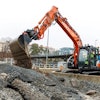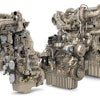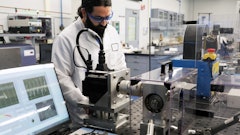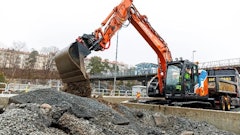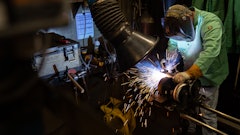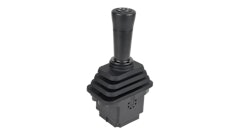Ten years after determining that the particulates in diesel emissions are toxic, the California Air Resources Board (CARB) is about to implement sweeping regulations that will impact all construction equipment currently being used in California.
The regulations, which have been approved by CARB and are awaiting technical approval by other state agencies, are significant for two reasons. They mark the first time state regulators have effectively circumvented the federal government's prohibition against state-by-state emission regulations for off-road equipment, and they also create the nation's first mandatory retrofit program. Up until now, retrofit programs have been voluntary.
CARB argues the new regulations are necessary because off-road equipment is a major contributor to air pollution. The regulations are expected to achieve a 37% reduction in particulate emissions by 2010 and 92% reduction by 2020. CARB says the regulations will also reduce NOx emissions 13% by 2015 and 32% by 2020.
A financial disaster looming?
However commendable the goal, the regulations are providing many sleepless nights. Fleet managers and construction company owners are concerned the regulations could put them out of business.
"This is a torpedo that is already in the water and that could take out medium-sized construction companies the next time there is an economic downturn," says Dan Fauchier, public works liaison for the Engineering & General Construction Assoc., a trade group in the San Diego area.
When Congress passed the Clean Air Act Amendments in 1990, it gave the federal government the sole authority for regulating emissions from new off-highway equipment. The strategy at the time was to require emission-reducing technologies on new equipment and let emissions from existing equipment be slowly phased out through natural fleet turnover. However once state regulators had gotten engine manufacturers to remove more than 90% new engine emissions, they started looking for other ways to meet the federal government's stringent air quality standards.
California regulators turned to a state law that allows them to regulate the emissions of substances that have been determined to be toxic air contaminants. In 1998, the agency formally identified diesel particulates as a toxic air contaminant amid diesel industry concerns that the data was based on 30-year-old studies that were no longer relevant.
ARB's initial attempts to regulate emissions from in-use equipment were focused on voluntary retrofit programs and some idling restrictions. The new regulations take the process a significant step further, requiring fleet owners to purchase new equipment, retrofit existing equipment or get rid of old equipment starting in 2010.
Farm equipment exempted
With the notable exception of farm equipment, the regulations affect all diesel-powered, construction vehicles and equipment powered by engines greater than 25 hp. CARB estimates the regulations will cost construction companies up to $3.4 billion.
Fleet owners are worried it will end up costing much more. One of their primary concerns is the potential impact on their bonding ability because the regulations would make them replace any equipment purchased before 1999.
"The regulations would make Tier 0 equipment worthless, lowering the value of a company's existing equipment," Fauchier says. "That will make it harder for construction companies to get bonding, which will make it harder for them to get business."
The rental industry is expected to be hit hard, as well. "It will be devastating to small mom-and-pop shops that can only afford to purchase used equipment," Fauchier says. "Forcing them to purchase new equipment could put them out of business."
The CARB regulations divide off-highway fleets into three categories based on the aggregated horsepower of all the equipment or vehicles in the fleet used more than 100 hours per year:
- Large fleets, which have 5,000 hp or more, will be required to meet the new regulations starting in 2010.
- Medium fleets, which have between 2,501 and 5,000 hp, will be required to meet the new regulations starting in 2013.
- Small fleets, which have 2,500 hp or less, will be required to meet the new regulations starting in 2015.
Mandating faster fleet turnover
All fleets, regardless of size, will be required either to meet specific "fleet-average" emission targets for particulate emissions or to incorporate the highest level of verified diesel emission controls to at least 20% of their fleet each year. Owners of large and medium fleets would also be required to meet fleet-average NOx emission targets or to repower, replace or retire 8 to 10% of their fleet each year. Any of the state's 35 local air districts would also be free to impose more stringent NOx emission standards if they deem it necessary.
"The biggest problem with the new regulations is the NOx requirement," says Fauchier. "It is not too difficult to add particulate filters, but the NOx requirements will require many construction companies to turn over their fleets four times faster than they normally would." That could create a serious financial drain on a company, especially if there is a downturn.
"If a company can't afford to turn over its fleet according to the schedule, it won't get a certificate of compliance, and that means they can't do business," Fauchier says.
Federal government, other states to follow?
Final state approval of the new regulations could occur before the end of the year, but they will still need a waiver from the federal Environmental Protection Agency (EPA), which could be delayed until 2008 because of the presidential elections.
There is also the possibility of a legal challenge. One potential area of dispute is the NOx component of the regulations. That's because CARB's regulations are based on its determination of diesel particulates as a toxic air contaminant, a determination that did not include NOx.
As always, whatever happens in California is of interest both nationally and globally. The EPA may also move to implement in-use regulations based on its 2002 finding that diesel exhaust was a potential carcinogen. Many states are also itching to jump in.
Says Fauchier: "I have been told there are 21 states ready to follow California's lead if it gets the waiver, so this could quickly spread across the nation."

